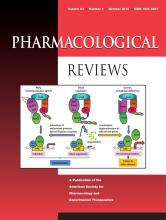Abstract
The evident limitations of the amyloid theory of the pathogenesis of Alzheimer's disease are increasingly putting alternatives in the spotlight. We argue here that a number of independently developing approaches to therapy—including specific and nonspecific anti-tumor necrosis factor (TNF) agents, apolipoprotein E mimetics, leptin, intranasal insulin, the glucagon-like peptide-1 mimetics and glycogen synthase kinase-3 (GSK-3) antagonists—are all part of an interlocking chain of events. All these approaches inform us that inflammation and thence cerebral insulin resistance constitute the pathway on which to focus for a successful clinical outcome in treating this disease. The key link in this chain presently absent is a recognition by Alzheimer's research community of the long-neglected history of TNF induction of insulin resistance. When this is incorporated into the bigger picture, it becomes evident that the interventions we discuss are not competing alternatives but equally valid approaches to correcting different parts of the same pathway to Alzheimer's disease. These treatments can be expected to be at least additive, and conceivably synergistic, in effect. Thus the inflammation, insulin resistance, GSK-3, and mitochondrial dysfunction hypotheses are not opposing ideas but stages of the same fundamental, overarching, pathway of Alzheimer's disease pathogenesis. The insight this provides into progenitor cells, including those involved in adult neurogenesis, is a key part of this approach. This pathway also has therapeutic implications for other circumstances in which brain TNF is pathologically increased, such as stroke, traumatic brain injury, and the infectious disease encephalopathies.
Footnotes
This article is available online at http://pharmrev.aspetjournals.org.
- © 2012 by The American Society for Pharmacology and Experimental Therapeutics
PharmRev articles become freely available 12 months after publication, and remain freely available for 5 years.Non-open access articles that fall outside this five year window are available only to institutional subscribers and current ASPET members, or through the article purchase feature at the bottom of the page.
|






